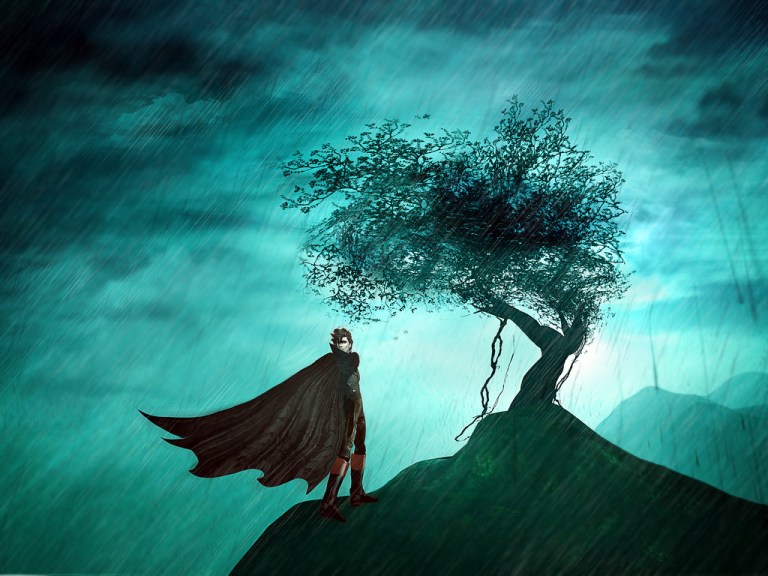Witches, wizards and magical beasts — the trappings of both a Harry Potter-themed YouTube musical and, often, the Freudian parade we have dubbed “Halloween.” Since October comes second only to December in crafting the mood of a full month around a single holiday — on the last day, no less! — it’s worth indulging in the spooky spirit sometimes, as I did in my Halloween book recommendations last year. None of the books I’m discussing are really Halloween-specific, so feel free to read these well into the wild, windswept winter — but these titles will help any Halloween hopefuls along, of course.
1. Deborah Harkness, “A Discovery of Witches”
A “Twilight” for the Anglophiles among us, “A Discovery of Witches,” written by USC historian Deborah Harkness, is the first in the author’s “All Souls” trilogy, which explores the supernatural society simmering under the surface of our own, populated by witches, vampires and demons. Diana Bishop, our protagonist and the descendent of a Salem-executed witch, is a historian of alchemy researching her latest work in Oxford, where she encounters the complex, polite, self-destructive Matthew Clairmont — a vampire. Detailed and sprawling yet fast-paced, “A Discovery of Witches” is a charismatic romance novel crossed with a fantastical political thriller (if you make it to book two, there’s even time travel!), and, conveniently, now an aesthetically exquisite television series on Sky One.
2. Oscar Wilde, “The Picture of Dorian Gray”
Since finally finishing “The Picture of Dorian Gray” in July (in a European coffee shop! With a violet highlighting pen! Wilde would be so proud), my lasting impression is just how funny this novel is — of course, it’s Wilde, so it’s automatically witty and contemplative and sardonic, but Dorian is also hilariously petulant, Henry egotistically pithy and Basil sadly besotted. It’s not really a send-up of hedonism, as is commonly cited, but a condemnation of selfishness and inauthenticity and the harm they inevitably incite, wrapped in the ribbon of Wilde’s prose and the repressed, lamp-lit aesthetic of late-19th-century England.
3. Laura Amy Schlitz, “A Drowned Maiden’s Hair”
I think about this book every goddamn day. Yanked at random from the local library’s bookshelf when I was about 10 years old, “A Drowned Maiden’s Hair” was a kind of formative text for me. Following willful, 11-year-old orphan Maud Flynn as she is abruptly adopted by weird sisters Hyacinth, Judith and Victoria, we sink into turn-of-the-20th-century spiritualism and sham séances, in which Maud is ordered to take part. Playing the deceased daughter of a bereaved, wealthy widow, Maud becomes a ghostly child herself, secreted away in the sisters’ attic and doomed to endure heartbreak, psychological manipulation and neglect alone. As Maud grapples with her growing conscience and the insincere smiles of sinister adults, “A Drowned Maiden’s Hair” combines ghost story and Gothic melodrama, becoming a moving and suspenseful tale that is ultimately about a little girl who wants to be loved.
4. Scott Westerfeld, “Peeps”
A zombie-apocalypse-meets-vampire-epidemic, Westerfeld’s comedic dystopia is not quite urban fantasy and not quite a biochemical disaster story. With vampirism manifesting as a kind of radical STI, narrator Cal Thompson caught the bug from goth hookup Morgan, but, rather than craving blood and hissing at sunlight, he’s a silent carrier – still contagious, but also still lucid. Action-packed and unsentimental, “Peeps” — named for those who have contracted the infection, “parasite positives” — is an intellectualized explanation for the vampire legend, littered with callbacks to evolutionary science and reminders to the audience that the most terrifying thing of all is how we, more often than not, are at the cold mercy of Mother Nature.
5. Libba Bray, “A Great and Terrible Beauty”
The inaugural installment in Libba Bray’s New York Times-acclaimed “Gemma Doyle” trilogy, “A Great and Terrible Beauty” combines the best tropes of the young adult and Gothic genres: a Victorian boarding school, a young ingénue beset upon by dark visions, the lingering ghosts of dead children, gossipy girl groups and an unsettling but breathtaking mansion and a dash of dark academia. “A Great and Terrible Beauty” is complicated, compelling and deliciously dark, the kind of story best consumed on a stormy night, curled up against the cold glass of a window, wondering if there might be something out there you’re not seeing.
6. Emily Brontë, “Wuthering Heights”
While one might recall “Wuthering Heights” as the book that Stephanie Meyer had Bella Swan read and reread to make her seem “intellectual” to teen audiences, Emily Brontë’s only novel is actually an exemplary model of 19th-century Gothic fiction in and of itself. With its bleak, blustery moors and toxic, symbiotic love, “Wuthering Heights” is “a fiend of a book – an incredible monster,” according to Daniel Gabriel Rossetti, the very embodiment of the terrifying, exhilarating sublime. “Wuthering Heights” is wild, possessive, bewitching, tempestuous, violent — neither Cathy nor Heathcliff are likable, and they can’t be, but they are deeply compelling and fascinatingly complicated. Ripe with Gothic tropes such as the frame narrative, the unhealthy heterosexual relationship and the sins of the past revisited and the liminality of death, “Wuthering Heights” probes the duality of man, the monstrosity inherent in the human and wonders just how layered, how dangerous, the human mind can be.
It seems deeply ironic to end this article on the number six, since — according to an extremely surface-level Google search — six, in numerology, is the number of empathy and loving relationships, of a “unconditional love, healing, and nurturing.” While it’s no seven — the most powerfully magical number, according to both JK Rowling and alchemical texts — and no 13 — how I wish this article had been published on Oct. 13, but alas, it remained unwritten — I’ll leave you with the wry, sarcastic number and wish you creepy reading.
Contact Claire Francis at claire97 ‘at’ stanford.edu.
